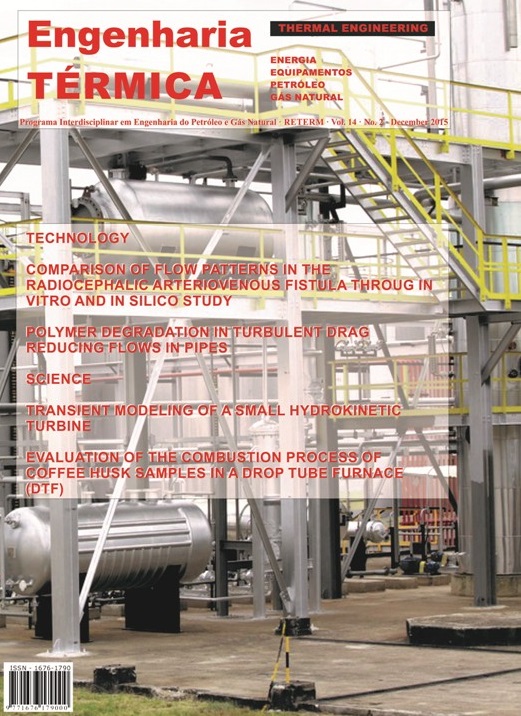THE EFFECT OF THE THERMODYNAMIC MODELS ON THE THERMOECONOMIC RESULTS FOR COST ALLOCATION IN A GAS TURBINE COGENERATION SYSTEM
DOI:
https://doi.org/10.5380/reterm.v14i2.62133Keywords:
thermoeconomics, thermodynamic modelingAbstract
The thermoeconomics combines economics and thermodynamics to provide information not available from conventional energy and economic analysis. For thermoeconomics modeling one of the keys points is the thermodynamic model that should be adopted. Different thermodynamic models can be used in the modeling of a gas turbine system depending on the accuracy required. A detailed study of the performance of gas turbine would take into account many features. These would include the combustion process, the change of composition of working fluid during combustion, the effects of irreversibilities associated with friction and with pressure and temperature gradients and heat transfer between the gases and walls. Owing to these and others complexities, the accurate modeling of gas turbine normally involves computer simulation. To conduct elementary thermodynamic analyses, considerable simplifications are required. Thus, there are simplified models that lead to different results in thermoeconomics. At this point, three questions arise: How different can the results be? Are these simplifications reasonable? Is it worth using such a complex model? In order to answer these questions, this paper compares three thermodynamic models in a gas turbine cogeneration system from thermoeconomic point of view: cold air-standard model, CGAM model and complete combustion with excess air.
Downloads
Published
How to Cite
Issue
Section
License
Direitos Autorais para artigos publicados nesta revista são do autor, com direitos de primeira publicação para a revista. Em virtude da aparecerem nesta revista de acesso público, os artigos são de uso gratuito, com atribuições próprias, em aplicações educacionais e não-comerciais.



